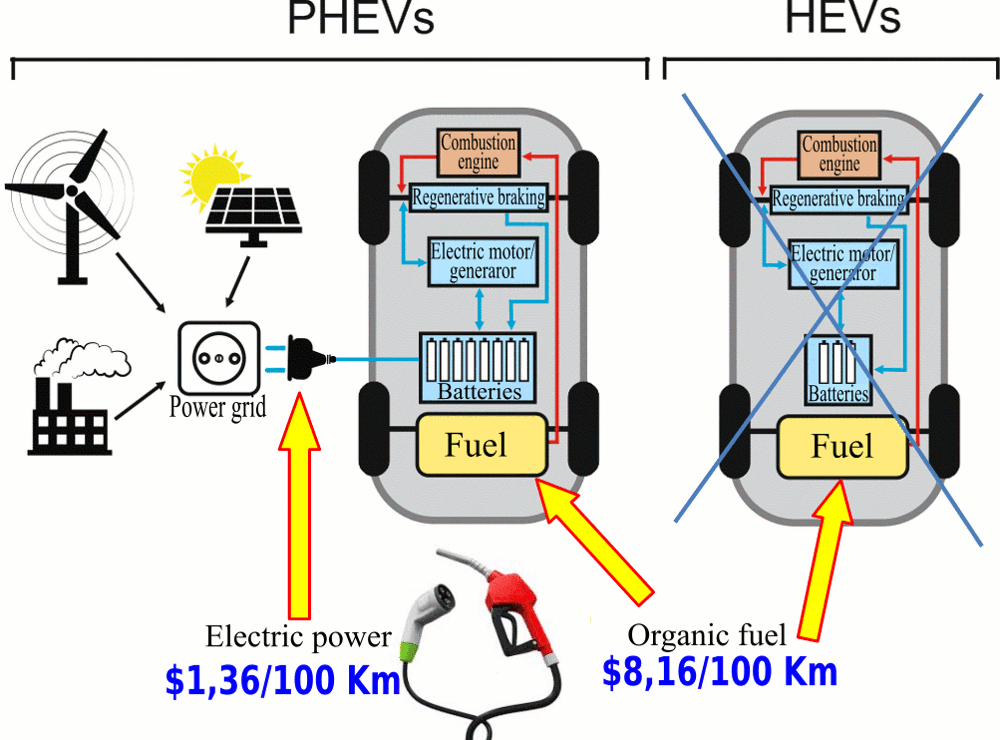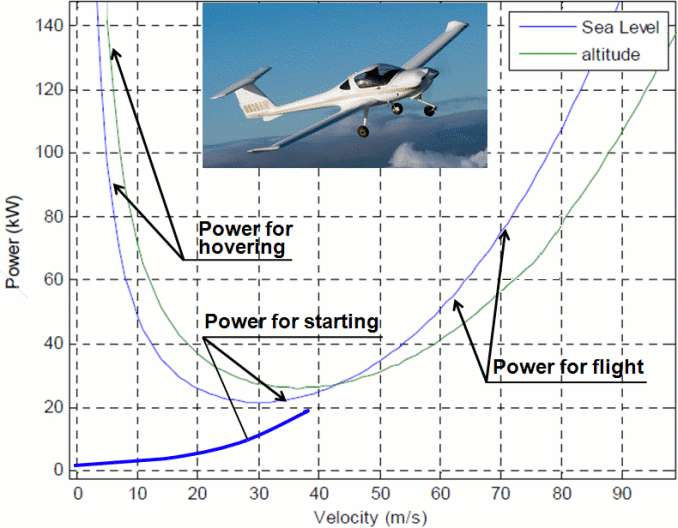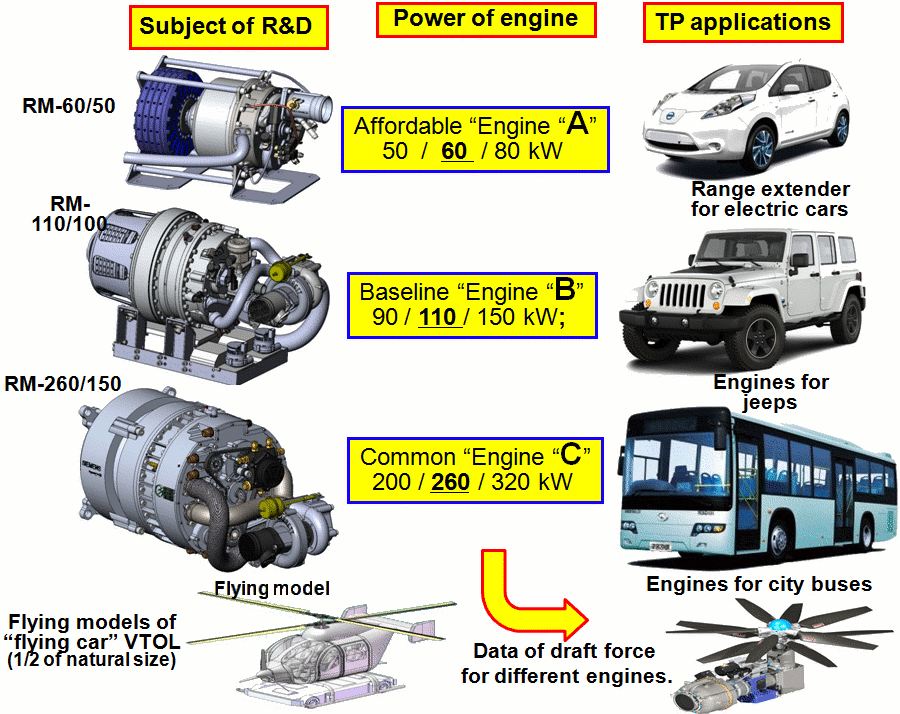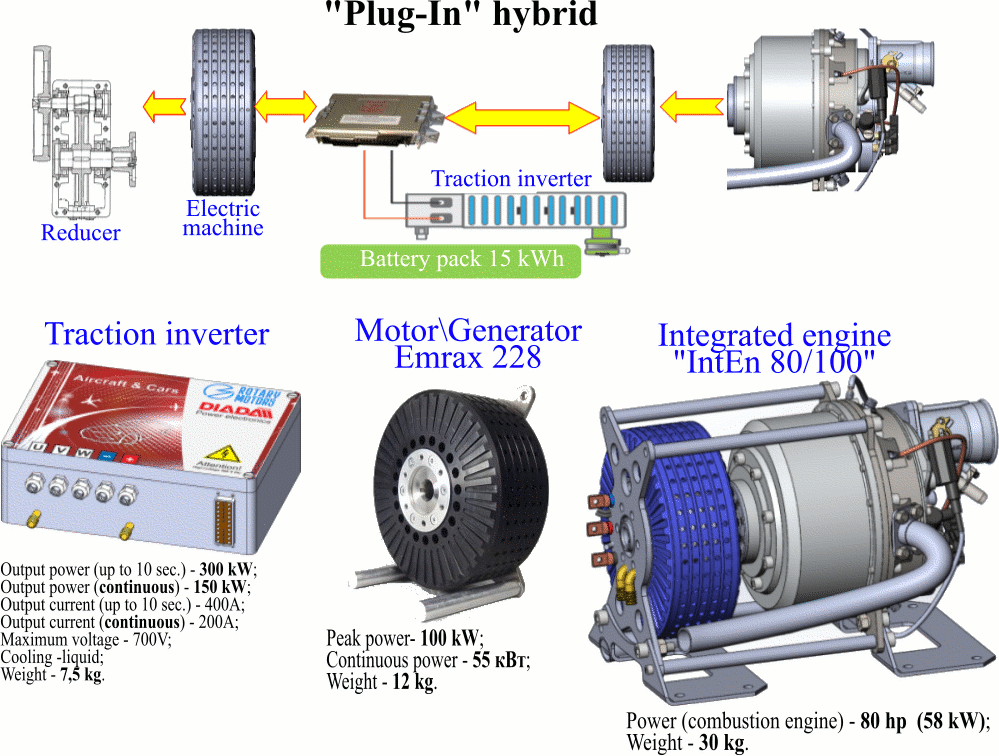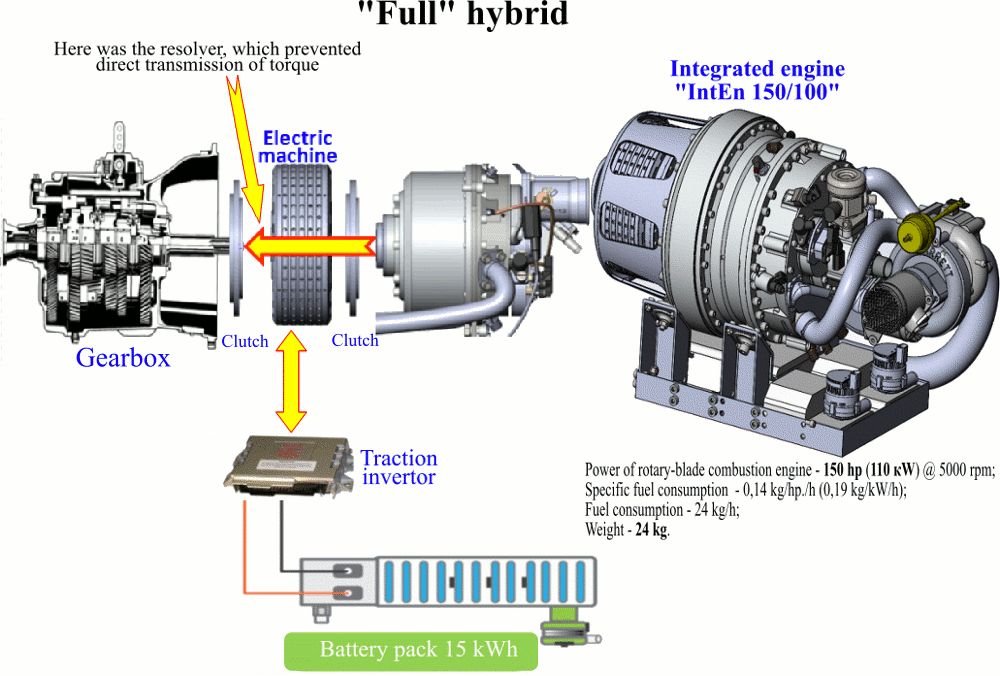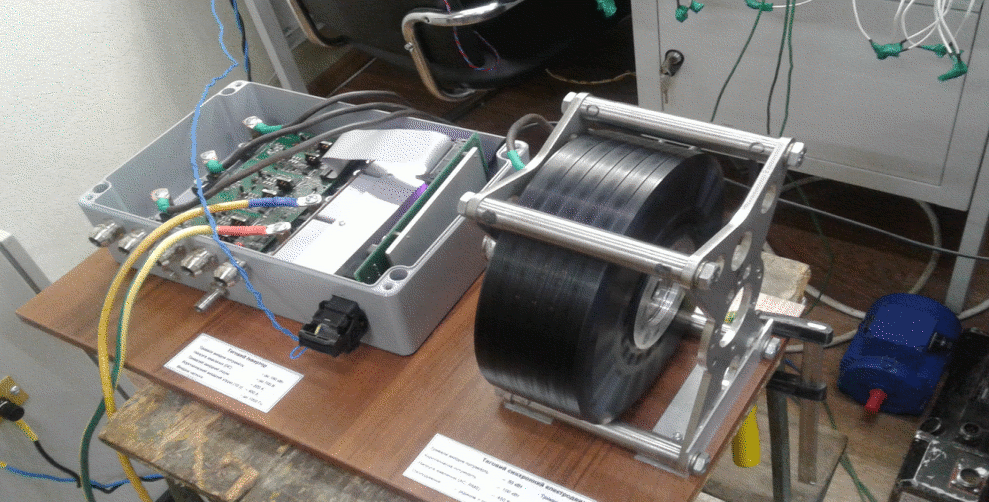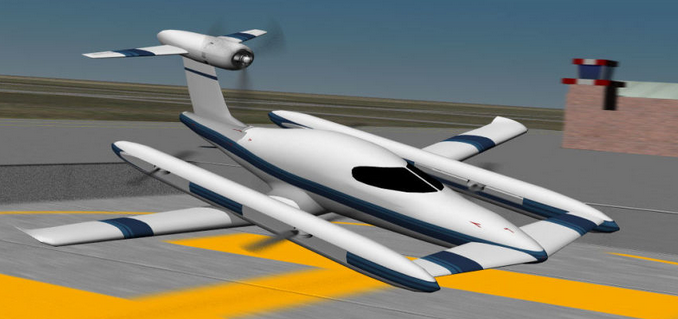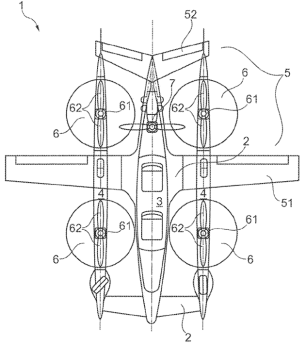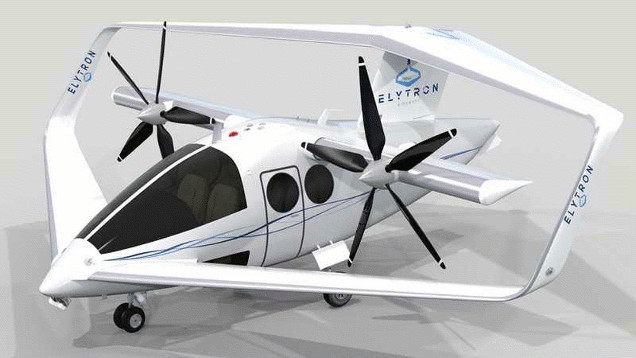Article: Integrated Engines for vehicle operational flexibility
The problem is the contradiction between saving, speed and traffic safety of transport.
The idea is to resolve these contradictions by operational flexibility of vehicle drive by creating special engines that combines the positive qualities of known engines in single design: piston', gas-turbine and electric (i.e. Integrated Engines - IntEn), but do not have their specific drawbacks. Such IntEn able to provide 3 modes for vehicle drive: electric, mechanic or electro-mechanical.
The solution is to equip of vehicles by IntEn, which are the most saving and eco-safe for trip on the roads in cities due to electric drive and so powerful that they provide a vertical take-off and landing of future AirMobiles in any desired place (even from / on roof) for following safe high-speed flight (≈ 350 km/h) in a straight line.
Advantages of IntEn are:
- 5 times less the cost of mileage 1 km when charging the battery from an external network;
- Two times smaller size and 3 times smaller weight (vs. piston ICEs);
- In 2 ÷ 3 times less fuel consumption (vs. gas-turbines');
- Eco-safety thanks to the electric drive and also possibility of gas operation.
Technology readiness level (TRL) of IntEn is 4+.
Transport is the locomotive of the economics of developed countries. The degree of transport mobility is determined primarily by used engines and can even to characterize the current technological level of civilization.
The limitation of mobility of existing transport defines by applied engines. There is still no decent alternative to heavy, bulky and harmful multi-cylinder ICEs. The main disadvantage of appeared electric vehicles is the complete dependence of them from the stationary electric network for charging the batteries. In addition, a big problem is the re-cycling of the batteries which have a toxic chemical elements.
Operational mobility is a new quality of transport of the next generation, which means the next possibilities for motion:
- by using an economical electric drive - for trip on cheap and eco-safe electricity with charging from an external power grid for traveling over cities for short distances (150-200 km);
- by using rotary-hybrid ICE - for trip outside of cities in case of discharging of electric batteries, as well as for vertical take-off / landing and high-speed flight.
The solution of optimization tasks for the delivery of payload by transport may carried out in two conjugate aspects:
- saving and environmental safety - by using an electric drive for traveling on roads for relatively small distances (for example, in towns during the day);
- speed and traffic safety - by means of high-speed flight (300-400 km / h) in a straight line between settlements for distances greater than 100 km.
1-st aspect: The cost of energy from the external power network is 5-6 times less vs. the cost of hydrocarbon fuel. For this reason, the use of electric hybrid cars has obvious advantages: it is possible to travel by using eco-safe and cheap electric power which received from an external power grid for relatively small distances in the city, and for long distances outside cities - by using a hydrocarbon fuel (see Fig.1).
2nd aspect: Vehicles (which are heavier than air) need powerful engines for high-speed flights, because in this case the energy costs per unit time are many times greater than for other modes of transport. Moreover, the vertical takeoff and landing (VTOL) is necessary in order to ensure that flying cars were not "tied" to roads, bridges and runways. The power in this case have be 5-7 times more vs. the takeoff with a horizontal starting (see Fig.2), i.e. very powerful, light and economical engines are needed for ensuring of VTOL.
But there are no such engines today. So, an invention was made for the revolutionary improvement of efficiency of low-power gas-turbine engines (for power less than 1 MW) by replacing the conventional for GTE workflow of Brayton`s cycle (in the flow of air without increasing of the pressure during fuel combustion) by Otto`s cycle (in a closed volume with increasing pressure at combustion of fuel) - see Fig.3,4 and our patents US8210151 B2; US8511277 B2; US8950377 B2. The result of this innovation is an increasing of GTE thermal efficiency of low power by 2-3 times and a large specific power of the engines (≈ 3 kW / kg) similar to GTE power. Engines with such parameters can already to provide a vertical takeoff and landing, as well as a sufficiently high speed of vehicle flight between settlements.
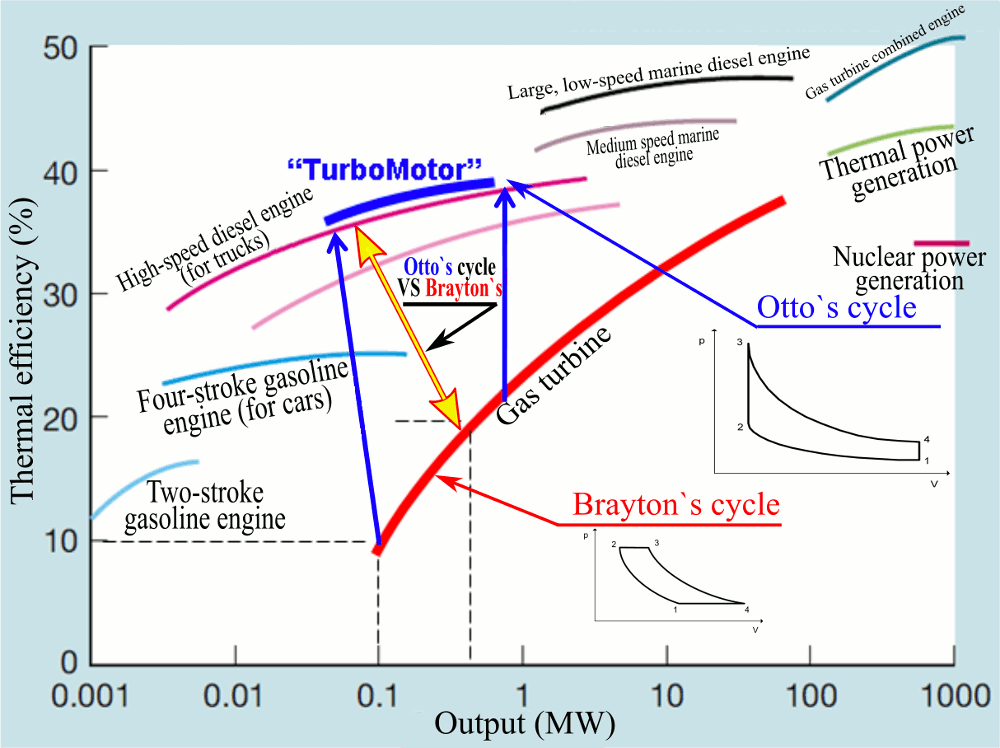 |
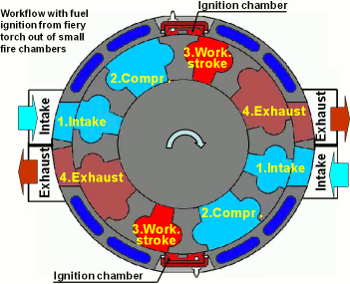 |
|
Fig.3. Increasing a thermal efficiency of GTEs (for power less 1MW) up to 2-3 times. |
Fig.4. The "TurboMotor" operation principle. |
Two inventions are realized in our rotary-blade engine. It was named "TurboMotor":
The first invention is the creation of a patented rotary kinematics for a modern ICE by the fusion in the single critical detail of the kinematic mechanism 3 greatest inventions of mankind (see patent US8210151 B2):
- 2-arm Archimedes lever;
- The wheel itself and
- Tooth of gear - for providing rotational-vibrational motion of 2 rotors which have blades.
The second invention is a hybrid work cycle which combines the positive qualities of 2 different work processes (see patent US8511277 B2 and Fig.3):
- Brayton`s cycle - constant burning of fuel in a special external small combustion chambers which have constant excess pressure (to ensure the reliability of the ignition of fuel mixture);
- Otto`s cycle - combustion of fuel in a closed volume between rotating blades with a significant increasing of working gas pressure (to ensure a good saving of the fuel).
The idea of "TurboMotor" operating is such (see Fig.4): to combine the qualities of the rotary kinematics of a gas turbine (for obtaining a high specific power) with several closed working volumes of a piston engine which have a large peak gas pressure (for obtaining a good fuel saving). The kinematic mechanism is the main feature of the "TurboMotor" design. It implements the coordinated rotational-vibrational motion of both 4-blade rotors in the toroidal working cavity of the engine. The blades of rotors form 8 closed volumes which constantly vary in magnitude (see Fig.4). Thus, eight 4-stroke working processes are performed simultaneously in the one working cavity of the "TurboMotor". In this is a "secret" of its large specific power.
Moreover, such a "hybrid" rotary-blade internal combustion engine which is obtained by such way, is synthesized together with modern brushless reversible electric machine (i.e. together with electric drive).
The result is a fusion of the electric drive (for fuel saving and eco-safe operation in cities) and very powerful "TurboMotors" (for vertical take-off and landing, as well as for high-speed flight), in order to combine in single unit the best qualities of 3 different types of engines :
- Rotary kinematics - from gas-turbine ICEs,
- Several closed working volumes - from piston engines,
- Electric motor / generator with power electronics and battery pack - from electric drive -
- this is Integrated Engine (briefly - IntEn), which combines in a single unit all 3 design features of different type engines (see Fig.5, on the right).
The breakthrough is in the possiblity of creating multi-seat high-speed AirMobiles VTOL when they are equipped with IntEn. We told, the problem is that vertical take-off and landing have a short-term phase of "hovering" (for 20-30 seconds), which requires engine power 5-7 times more vs. the takeoff power with the horizontal takeoff (see Fig. 2). IntEn have enough summary energy potential ("TurboMotor" + electric drive) to provide a vertical take-off and landing anywhere (even from / to the roof of the house) for a subsequent high-speed flight for hundreds kilometers. But such an AirMobile can drive through the city in the general flow of cars by using eco-safe electric drive with minimum energy expenditure. Such transport is urgently needed for services of emergency call (ambulance, rescue services, etc.), for postal and forwarding services and as a means for increasing the mobility of VIPs and businessmen.
The safety of the flight in a straight line is much safer than the tiring long distance driving along winding roads with a two-way traffic, when the difference in speed of the oncoming vehicles can be 200 km / h or when the car's speed is 100 km / h and distance to the side of the road is 1 m.
Our tasks are to create a powerfulness line of "atmospheric" IntEn 60, 110 and 260 kW with the possibility of their upgrade by turbochargers up to 320 kW in order to ensure a radical modernization of existing transport, as well as for assessment of their suitability for the creation of future AirMobiles VTOL. Such an assessment is carried out by measuring the static thrust of propellers which are driven by the IntEns of different power, as well as testing by the computer' and natural models of the AirMobiles VTOL with the verification of their characteristics in free flight. It is impossible to upgrade a huge number of existing vehicles with only one engine size. Therefore, we offer IntEn of different capacities from 60 to 320 kW, which are the most demand in the transport market at present time (see Fig.5).
Fig.5. Three main sizes of InMot: 60, 110 and 260 kW (80, 150 and 350 hp) and the planned vehicles for their testing.
The structural schemes of IntEn (serial and parallel) are shown on the example of the wheel drive in Fig 6, 7.
Sequential scheme ("pure" electric drive). This scheme is optimized for a relatively small power with charging from an external network and with an economical expenditure of power. "TurboMotor" here is mainly used as an auxiliary autonomous energy source, for example, as a car range extender. The peculiarity of such an electric drive is that there is only an electrical connection between the "TurboMotor" and the load (see Fig.6).
Parallel scheme (electro-mechanical drive). This scheme is optimized for transmission a high power into load (see Fig.7). Its feature is the presence of a reversible electric machine - a motor / generator and a clutch between it and the "TurboMotor".
The inverter controls the operation of the motor / generator and the clutch. This allows to carry out different combinations of energy transfer between: "TurboMotor", electric battery and load. The possibility of a short-term connection of the electric motor to the load makes it possible to carry out a pulsed increasing of power, which is very valuable for aviation equipment.
The components of the electric drive - the motor / generator for a peak power of 100 kW and a universal power inverter for 300 kW - we already have they for our experiments as working prototypes (see Fig 8).
AirMobiles VTOLs is a very realizable a new mode of transport if they will be equipped with light and compact IntEn of the appropriate capacity. In particular, we carried out preliminary studies on the evaluation of the required engine power for a vertical takeoff and landing capable aircraft, which is described in the Airbus patent: Pub. No.: US2016 / 0236774 A1 (see Fig.10). The power 45 kW * 4 = 180 kW is needed to provide a vertical take-off speed of 1 m / s for such 4-seat aircraft of this type (take-off weight 800 kg) which has 4 lifting propellers with a diameter of 2 m with speed rotating of 1910 rpm. The power of the engine should be 140 kW to provide a cruising speed of 350 km / h of the aircraft which has the aerodynamic quality equal to 10. Thus, the total power of the engines of this aircraft should be about 300 kW. This power can be providing by a typical IntEn of 260 kW when its power will be increased up to 320 kW by using a turbocharger.
May be other possible forms of AirMobiles VTOLs (see Fig.11).





